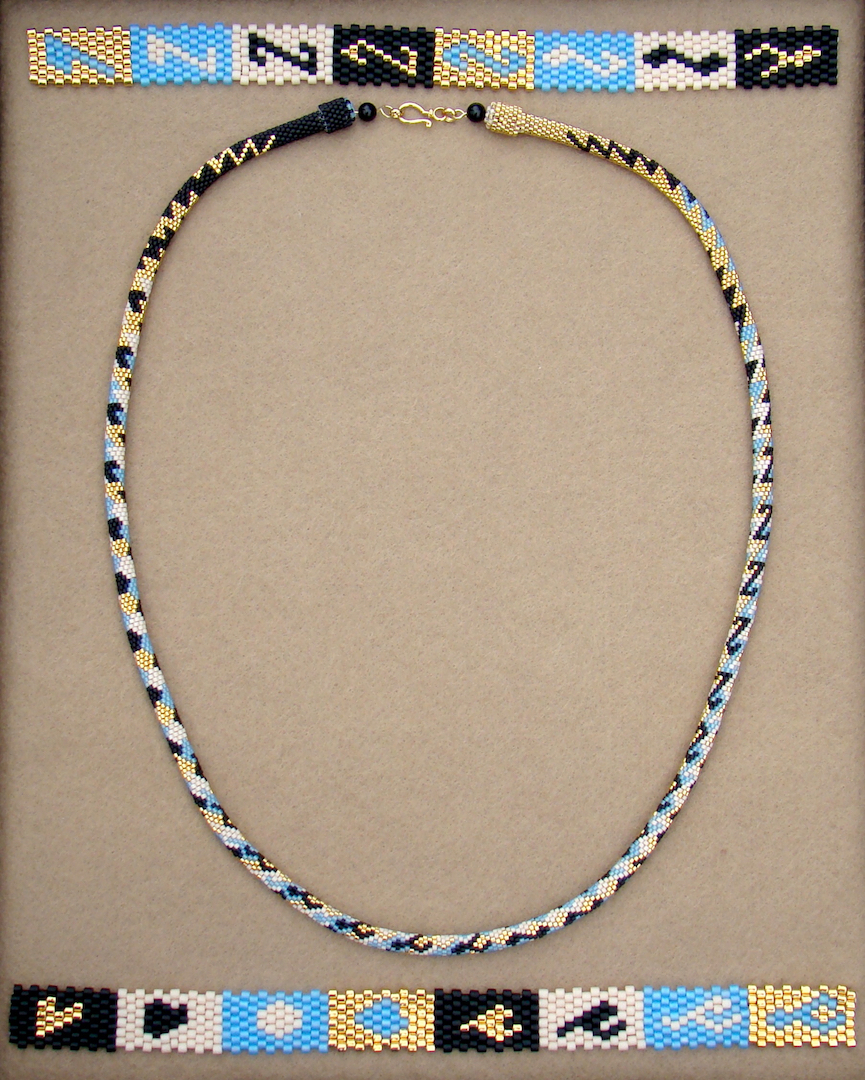Tessellation Evolution
Glass beads, gold-plated glass beads, onyx beads, gold-plated clasp, thread
2012
Honorable Mention at the Joint Mathematics Meetings Exhibition of Mathematical Art, San Diego, 2013

Tessellation Evolution is an outgrowth of an extended research project with computer scientist and artist Ellie Baker on applications of mathematics to bead crochet. In our work, we meet the challenge of designing symmetric patterns on a cylindrical spiral of beads by making periodic designs in the plane with special constraints that allow them to wrap seamlessly around the cylinder.
From one end of this necklace to the other, the design evolves through 16 different tessellations of the cylinder by congruent tiles in four colors. The strips of beads along the top and bottom of the frame, woven out of larger beads for clarity, exhibit the 16 tiles underlying the bead tessellations.
The body of the necklace is a bead crochet rope. To construct the design, I manually colored a planar hexagonal grid of beads using the symmetry constraints imposed by crocheting the beads into a spiral. To make the necklace, I strung 4307 beads in the order dictated by the design onto five spools of thread, then crocheted the bead rope using a 1.1 mm hook. The caps at the end of the tube are woven with an additional 210 beads.
Many thanks to Gwen Fisher for encouraging me and Ellie Baker to explore evolving tessellations, to Craig Kaplan and Florence Turnour for their inspiring parquet transformation artworks, and to Anne Benson for her woven bead cap pattern.
To see more about the underlying mathematics and the art of bead crochet, look at Chapter 5 of Crafting Conundrums: Puzzles and Patterns for the Bead Crochet Artist by Ellie Baker and Susan Goldstine.